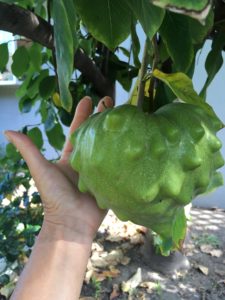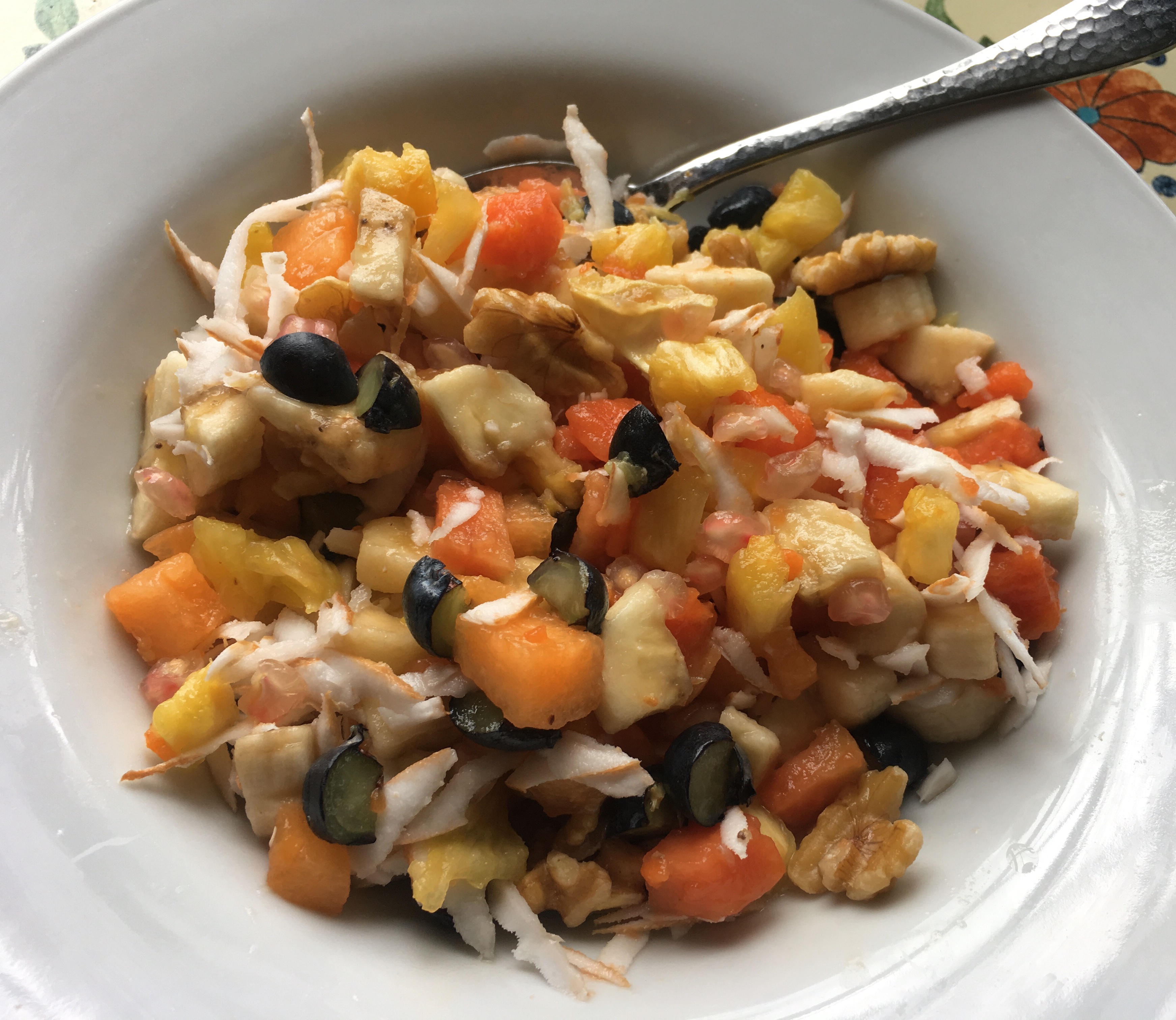I had never heard of a cherimoya tree or its fruit until seeing one at Mother Mary’s in Santa Clara, CA. Her tree is over twenty feet tall and it dropped several small fruit while we were visiting and had a large one still hanging on the limb.

Cherimoya Fruit
I did a little research on the cherimoya and, although it is indigenous to South America, they are now found in other areas of the world, including California after its introduction in the late 1800’s.
Years ago, there was a team of botanists who came to visit Mother Mary when they learned that her cherimoya was bearing fruit and that she was not hand-pollinating the flowers. According to Wikipedia, “The flowers are hermaphroditic and have a mechanism to avoid self-pollination. The short-lived flowers open as female, then progress to a later, male stage in a matter of hours. This requires a separate pollinator that not only can collect the pollen from flowers in the male stage, but also deposit it in flowers in the female stage.
Studies of insects in the cherimoya’s native region as its natural pollinator have been inconclusive; some form of beetle is suspected. Quite often, the female flower is receptive in the early part of the first day, but pollen is not produced in the male stage until the late afternoon of the second day. Honey bees are not good pollinators, for example, because their bodies are too large to fit between the fleshy petals of the female flower. Female flowers have the petals only partially separated, and the petals separate widely when they become male flowers. So, the bees pick up pollen from the male flowers, but are unable to transfer this pollen to the female flowers. The small beetles which are suspected to pollinate cherimoya in its land of origin are much smaller than bees.
For fruit production outside the cherimoya’s native region, cultivators must either rely upon the wind to spread pollen in dense orchards or else use hand pollination. Pollinating by hand requires a paint brush. Briefly, to increase the fruit production, growers collect the pollen from the male plants with the brush, and then transfer it to the female flowers immediately or store it in the refrigerator overnight. Cherimoya pollen has a short life, but it can be extended with refrigeration.” Very interesting, indeed. How has Mother Mary’s tree managed to produce fruit year after year? Perhaps beetles have done the work, like they have found in Peru, or perhaps it is her hummingbirds.
The fruit, also known as custard apple, was described by Mark Twain as “the most delicious fruit known to man.” It is oval in shape and typically has smooth, bumpy skin. The fruit flesh is creamy and white in color, and is embedded with numerous, large dark brown seeds. When cherimoya is ripe, the skin remains green and will be slightly soft when squeezed. The flavor has been described as a blend of banana, papaya, peach, pineapple, and strawberry.
If chilled, the fruit, also called ice cream fruit, can be eaten with a spoon and is commonly used in yogurt, gelato and ice cream. Who knew that such a delicious and exotic fruit would be found in Mother Mary’s backyard!





